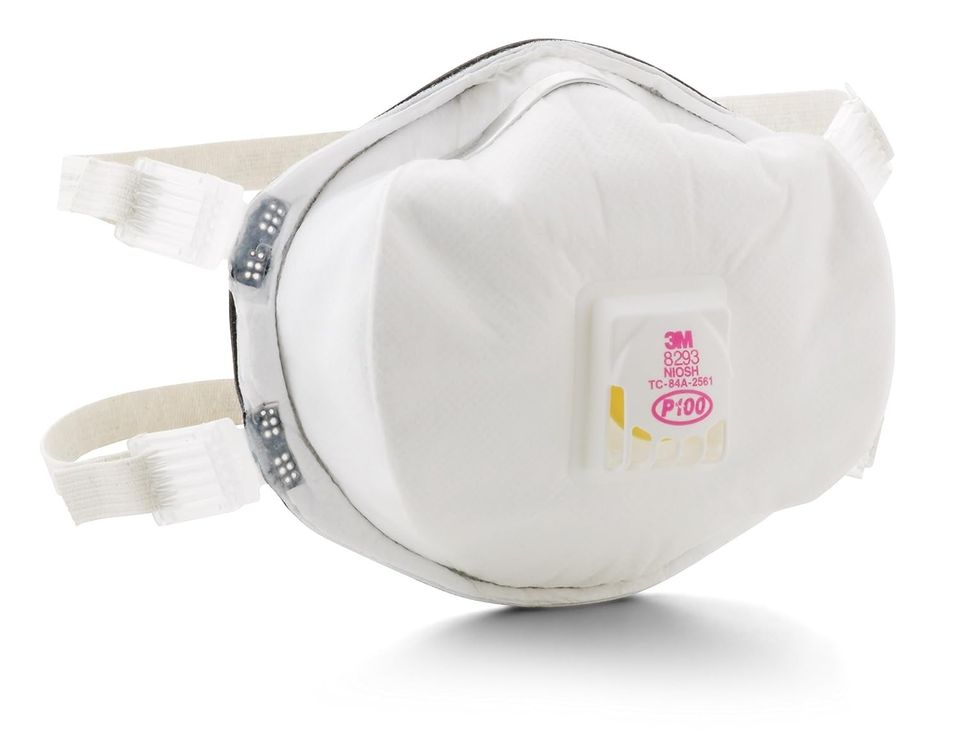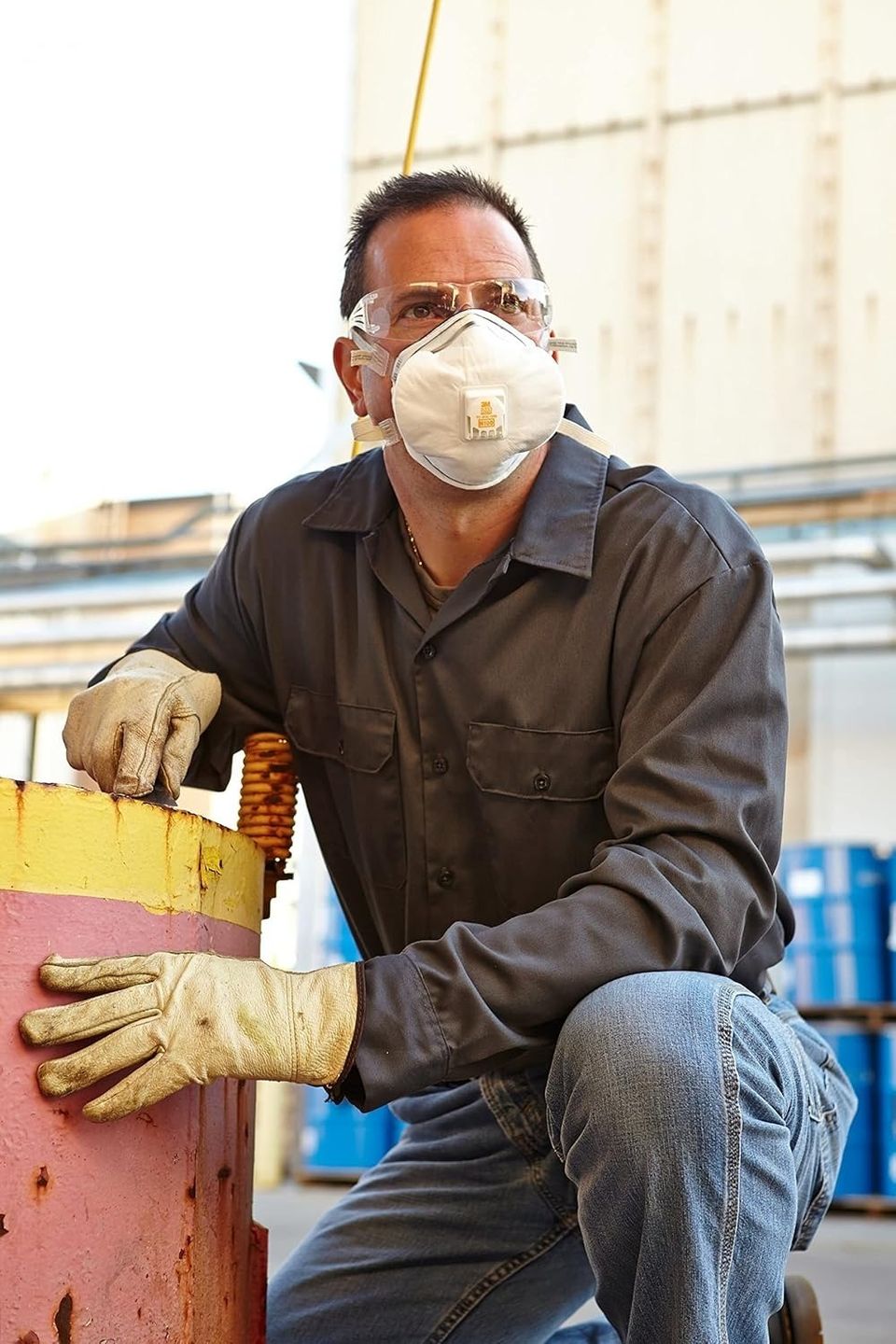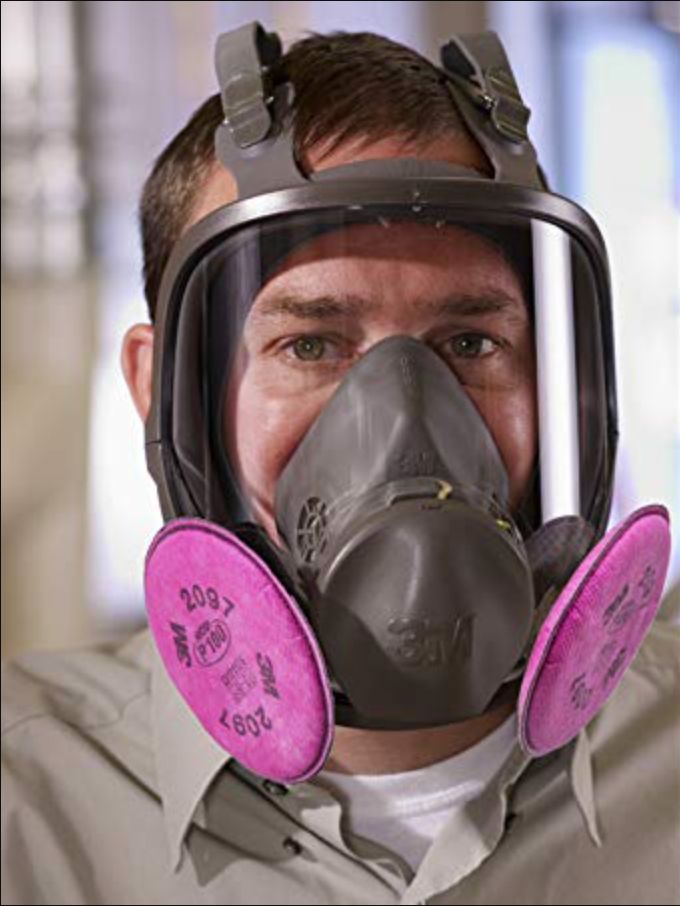This Mask Filters Out More Smoke Than N95s, So Stock Up Now
It’s tempting to compartmentalize the fires tearing through Southern California as some kind of environmental freak accident. The reality is more sobering.
“It’s important to point the finger here at climate change,” Anthony Wexler, director of the University of California, Davis’ Air Quality Research Center told HuffPost. “This not random.”
Viewed within the context of global warming, the devastation in Los Angeles is more likely than not a glimpse of what’s to come throughout the United States: Worsening climate change creates the conditions for hyper-destructive natural disasters in populous urban environments. That’s why it’s so important to prepare for hazardous emergency conditions now — not later.
Advertisement
Protective masking is a crucial way to guard your health if you must go outside during a toxic disaster. (Wexler emphasized that staying indoors, with a quality HEPA carbon-activated air purifier, is best. If you must go outside, limit your inhalation; in other words, avoid outdoor exercise.) From the ongoing pandemic, many of us are familiar with N95 and KN95 masks to guard against the spread of the COVID-19 virus. But when you’re dealing with toxic airborne ash and hazardous smoke, like Angelenos currently are, P100 masks “provide greater protection,” according to California’s Division of Occupational Safety and Health.
Opting for a mask with even more protection, like a P100 — which filters at least 99.97% of particulates when worn correctly, as opposed to 95% from an N95 — is well worthwhile. Ash and smoke from structural urban wildfires, like the kind Los Angeles is experiencing, contain toxic pollutants from burning homes, including lithium ion and lead acid batteries, paint and paint thinners, plastics, fire retardants from couches and mattresses, and more. These contaminants, which travel by wind for miles and are invisible to the human eye, are more harmful than smoke and pollution from other sources, and can lead to issues like chronic bronchitis and cancer, per the University of California, Los Angeles’ Labor Occupational Safety & Health Program.
Advertisement
You might also want to consider using a P100 respirator, which comes in half- and full-face versions, instead of a disposable P100 mask. In a Zoom webinar with the Coalition for Clean Air, occupational health and safety expert Dr. Rania Sabty explained that a “P100 respirator … [filters particles] to a higher degree than an N95 because it actually fits over the nose a lot better than your N95.”
Like N95s and KN95s, P100s do not provide protection from volatile organic compounds or hazardous gases, Sabty added in the recording. This is why the best practice is to stay indoors with a purifier.
Advertisement
To maximize your mask’s protection, creating a good seal around your face is crucial, but facial hair like beards can get in the way of a sufficiently tight seal. As a result, “People with facial hair … might want to get a full-face respirator, which is a higher degree of protection,” Sabty noted.
In Los Angeles, the situation will change over time and become increasingly localized to the fire sites. Still, “the ash removal will definitely take over a year,” cautioned environmental health expert Jane Williams during the webinar, noting that folks who want or need to stay near the sites of the fires must take precautions.
Advertisement
HuffPost has selected some P100 masks and respirators for your convenience, along with some more information, below.
HuffPost and its publishing partners may receive a share from purchases made via links on this page. Every item is independently selected by the HuffPost Shopping team. Prices and availability are subject to change. The experts consulted for this story do not necessarily endorse the products ahead unless otherwise noted.
A disposable P100 mask with adjustable straps
This disposable P100 mask by 3M is approved by the National Institute for Occupational Safety and Health and promises to filter up to 99.97% of particulates if worn properly. (When properly worn, with a tight seal, your mask should sink in slightly when you breathe.)
The mask comes with a handy front exhalation valve that’s designed to reduce heat and humidity buildup inside the respirator, making it a comfier wear.
You’ll know when it’s time to replace your disposable mask when you start to have difficulty breathing or begin smelling something through the respirator: That means particulates are “breaking through the cartridge,” according to Sabty.
Or an N100 disposable mask
You can also opt for a disposable N100 mask. “The ‘N’ designation means that [the respirator is] not resistant to the effects of oil mists,” according to Cal/OSHA, while “P and R versions … are more resistant to oil mists.” Both P100 and N100 offer greater protection than their N95 counterparts.
This NIOSH-approved N100 mask by 3M sports an adjustable nose clip and head straps, along with a heat-reducing exhalation valve at the mask’s front.
A half-face P100 respirator that’s reusable with proper maintenance
Half- and full-face respirators with particulate filters are “more protective and longer lasting than disposable [face pieces],” according to Cal/OSHA. “But [they need] to be cleaned and maintained at least daily.”
Available in small, medium and large sizes, this NIOSH-approved reusable half-face P100 respirator comes with a half-face piece and two 3M P100 particulate filters. Designed for easy disassembly and cleaning for a long lifespan, the mask is designed to feel lightweight, soft and comfortable on, weighing just 5 ounces.
When the included P100 cartridges have been used to capacity, you can just remove and replace them with any new P100 cartridge filters (like the ones here).
Note: The pink color indicates that it’s a P100 filter; the color is designated by NIOSH for purposes of uniformity and identification.
Advertisement
A full-face respirator for optimum protection — or if you have facial hair
Full-face respirators are ideal for folks with beards and other facial hair, which can prevent masks and half-face respirators from maintaining a tight seal, explained Sabty.
Since they include built-in eye protection, these respirators also help prevent eye irritation.
HuffPost selected this 3M P100 full-face respirator, which is NIOSH-approved and available in sizes medium and large. The mask includes a full face piece and two pairs (four total) of P100 filter cartridges.
The mask has provided “freedom in smoke filled times,” according to one reviewer, who wrote: “I love how easy it is to see out of the full face and how easy to breathe.”
And some safety goggles to guard your eyes
To prevent any airborne ash from getting into your eyes, fully enclosed safety goggles are preferable to safety glasses, noted Sabty.
How do you know if there’s airborne ash or toxic smoke in your area that would necessitate goggles? Use your senses: If you can smell smoke, or see larger particles like ash on your car, you can assume that wind has blown it in your direction.
Based on Sabty’s advice, we’ve selected these highly rated Dewalt safety goggles. I’ve been wearing these goggles in Los Angeles, and they’ve given me immense peace of mind. When combined with a mask, they sometimes do fog up, but given their affordability and the physical barrier protection they provide for my sensitive eyes, I’ve found they’re well worth the price and good quality for the money. I also appreciate that they offer UV protection.
If you wear glasses, you can also buy safety goggles that have room for prescription eyewear, like these goggles from NoCry.






Comments are closed.